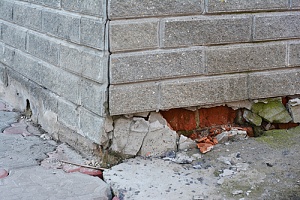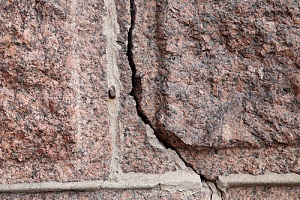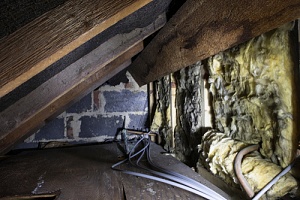 It is doubtful you own anything more expensive than your home, which means that you want to protect it as much as possible. This can mean spotting issues early on so that repairs do not become bigger and more expensive. Keeping your eye out for signs of foundation problems can save you from headaches in the future. Consider the top 10 signs to look for when assessing if your home has foundation issues, and assess your home for any potential problems.
It is doubtful you own anything more expensive than your home, which means that you want to protect it as much as possible. This can mean spotting issues early on so that repairs do not become bigger and more expensive. Keeping your eye out for signs of foundation problems can save you from headaches in the future. Consider the top 10 signs to look for when assessing if your home has foundation issues, and assess your home for any potential problems.
Common Signs of Foundation Problems
1. Foundation Upheaval
You can tell if your foundation has experienced an upheaval if your slab foundation has shifted upward. There are a few reasons why your foundation might undergo an upheaval such as soil that contracts or expands or an unusual amount of moisture due to leaks or rain. In fact, moisture is the number one reason for upheaval in slab foundations.
2. Foundation Sinking or Settling
One way to know if your house is sinking is to check if one side is lower than the other. This imbalance is a common indicator of a foundation issue. If the home is lopsided, it can usually be fixed by lifting the foundation and installing foundation piers. If you have any suspicion that your home is sinking, you want to have it checked by a professional as soon as possible. We recommend Dirt Connections, who will come out and give you a free foundation inspection, along with advice on next steps.
3. Gaps Around Windows
If you notice gaps around your exterior window frames (or around exterior doors), it is a good indication that you have a foundation problem. The shifting of the foundation has created the gaps, which can start off small but dramatically grow in size overtime as the shifting continues.
4. Cracks in the Foundation
 While it is entirely normal for homes to develop small (vertical) cracks in the foundation within the first 3 years of construction, if you find horizontal cracks, there is a good indication that the problem is more significant. Horizontal fractures are more concerning than vertical ones because they indicate an issue with of pressure being placed on the perimeter of your home’s foundation. Vertical cracks are less concerning given that drywall runs vertically.
While it is entirely normal for homes to develop small (vertical) cracks in the foundation within the first 3 years of construction, if you find horizontal cracks, there is a good indication that the problem is more significant. Horizontal fractures are more concerning than vertical ones because they indicate an issue with of pressure being placed on the perimeter of your home’s foundation. Vertical cracks are less concerning given that drywall runs vertically.
While cracks can certainly be a major issue, some are truly just cosmetic. Having a foundation repair contractor take a look to assess the damage can be invaluable in these situations.
5. Doors and Windows That Do Not Open or Close Properly
When doors on the inside of your home are impacted by a foundation issue, they will typically drag or stick at the top. Exterior doors, on the other hand, will hang down at the top, appear overall uneven, or drag at the threshold.
6. Porch or Patio Separating From the House
Similarly, if your patio, porch or deck begins to separate from your house, this usually indicates the foundation is moving, which could be due to soil shifting.
7. Sagging Floors
Anytime your floors seem to be unlevel–sagging, dibbing, or bowing–you might have a foundation problem, as floors tend to sag when pier and beam foundations are impacted by foundation issues.
8. Separation Between Cabinets and the Wall
Finding any separation between your cabinets and the wall is another indicator of a foundation issue. As with most gaps, the larger the space, the bigger the issue. Left unchecked, you could find that you have a space a half inch wide, signalling huge problems with your foundation. Checking your cabinets regularly can help you spot these changes before a foundation issue gets worse.
9. Damp Crawl Space
 If you find that your crawl space is damp, it is really important for you to determine the reason. A lot of moisture in your crawl space can be a sign that you either already have a foundation problem or will soon develop one. As an aside, moisture is a terrible problem to have in your home. It can attract insects, such as termites, and can cause wood in your home to rot, causing a foul odor.
If you find that your crawl space is damp, it is really important for you to determine the reason. A lot of moisture in your crawl space can be a sign that you either already have a foundation problem or will soon develop one. As an aside, moisture is a terrible problem to have in your home. It can attract insects, such as termites, and can cause wood in your home to rot, causing a foul odor.
10. Wallpaper Wrinkles
Wallpaper wrinkles are often another reliable indicator that you have a foundation problem. If you find that your wallpaper has new crinkles, creases or wrinkles, it usually means that your foundation is moving. As the movement continues, it can cause your wallpaper to rip.
Learn More About Foundation Problems and Repairs
While each of the aforementioned issues identified here can be fairly easy to spot, they often go unnoticed by homeowners who are accustomed to seeing their homes every day. Given that the movement can be subtle, many homeowners only notice the problem when the issue has gotten out of hand. That is why we recommend working with a professional. An experienced home repair contractor can help you identify issues you might not see yourself, quickly assess your foundation issues, and repair any issues as soon as possible. Contact the experienced experienced foundation repair contractors at Dirt Connections today for more information and to get your foundation issues adjusted before they get out of hand.









































